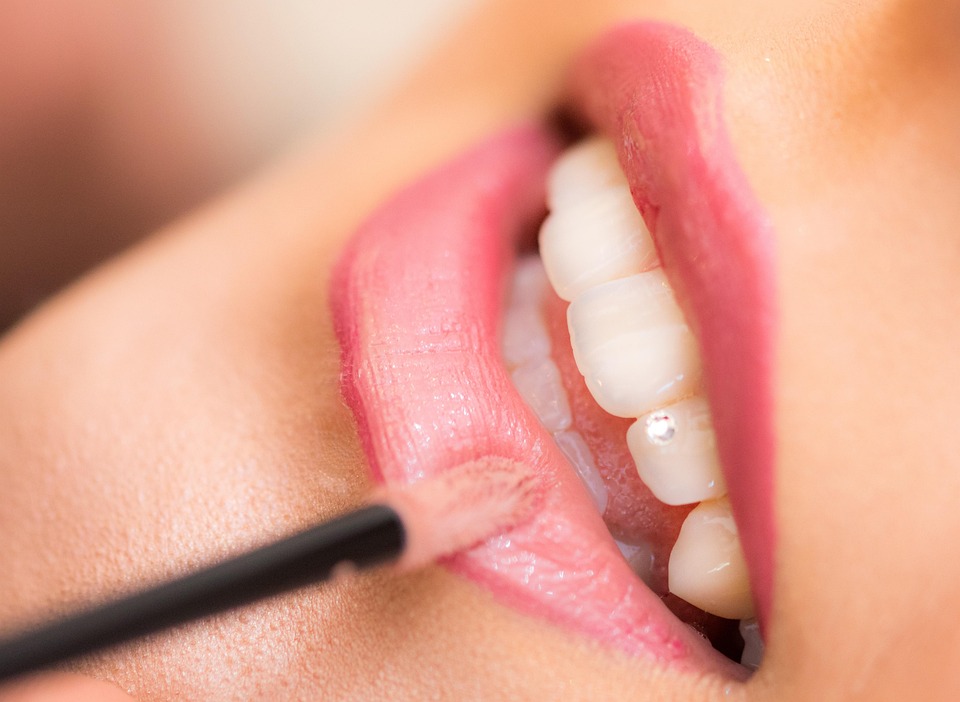
Are Veneers Better Than Composite Bonding
I’ve been there. Staring at your reflection, zooming in on your teeth. Maybe there’s a small chip that drives you crazy. Or a gap you’ve always hated. Perhaps your teeth just aren’t as bright as they used to be. You want to fix it, but the options are confusing. You’ve heard about veneers and composite bonding, but they sound like something out of a science fiction movie. This article is for you. I’m going to break it all down in simple, plain English, based on my own journey. We’ll walk through the good, the bad, and the ugly of both options so you can make a choice that leaves you smiling for years to come.
Article Outline
- Why Was I Even Looking at My Smile in the First Place?
- What Exactly Is Composite Bonding? The Quick Fix?
- And What’s the Big Deal About Porcelain Veneers?
- So, Which One Looks More Natural?
- How Long Do They Actually Last? A Reality Check.
- Can My Wallet Handle This? A Frank Talk About Cost.
- How Much Time Will I Spend in the Dentist’s Chair?
- Are They Reversible? What if I Change My Mind?
- What About Stains and Chips? Who Wins That Fight?
- My Final Decision: What I Chose and Why It Was Right for Me.
Why Was I Even Looking at My Smile in the First Place?
It all started with a photograph. It was a happy moment, a birthday party, and I was laughing. But when I saw the picture later, all I could see was that one front tooth. It was slightly shorter than the other one, a tiny chip from a long-forgotten childhood accident. Suddenly, it was all I could see. Every time I smiled in the mirror, my eyes went right to it. It’s funny how a small imperfection can feel like a giant spotlight, isn’t it? That little chip made me self-conscious. I started doing that closed-lip smile thing, which just isn’t me.
This is a common story. Maybe for you, it isn’t a chip. Maybe it’s a stubborn coffee stain that no whitening treatment can touch. Or maybe your teeth have natural gaps or are slightly crooked. You feel that twinge of unhappiness when you see your smile. It holds you back from laughing freely or speaking up in a meeting. That’s the problem. It’s not just about vanity; it’s about confidence. It’s about feeling like the outside you matches the happy you on the inside. Before you even think about cosmetic fixes, though, your dentist will make sure your general teeth health is good. You can’t build a pretty house on a weak foundation, and you can’t put veneers or bonding on teeth that have active dental diseases like cavities or gum issues. First, you get healthy. Then, you get beautiful.
What Exactly Is Composite Bonding? The Quick Fix?
Let’s start with the simpler of the two options: composite bonding. Imagine a sculptor working with clay. That’s basically what your dentist does with bonding, but the “clay” is a tooth-colored putty-like material called composite resin. It’s the same stuff they often use for modern fillings. The process is pretty straightforward and, I have to admit, kind of cool to watch. Your dentist picks a shade of resin that perfectly matches your natural teeth. There’s a whole library of shades. It’s amazing.
Your dentist then applies the soft resin directly to your tooth. They skillfully sculpt and shape it right there in your mouth to fix the chip, fill the gap, or change the tooth’s shape. Once it looks perfect, they shine a special blue light on it. This light hardens the resin in seconds, bonding it securely to your tooth. Finally, they polish it until it gleams just like your other teeth. The whole thing for one or two teeth is often done in a single visit, with no lab work and usually no anesthetic. It’s fast, effective, and less invasive. Think of it as a targeted, artistic touch-up for your smile.
And What’s the Big Deal About Porcelain Veneers?
Now, porcelain veneers are a whole different ball game. If bonding is a quick, masterful painting, veneers are like custom-designed, kiln-fired tiles for your teeth. A veneer is a wafer-thin shell of medical-grade ceramic, or porcelain, that is permanently attached to the front surface of a tooth. They aren’t sculpted in your mouth. Oh no. They require a lot more planning and artistry behind the scenes. It’s a true collaboration between your dentist and a skilled ceramist.
Here’s how it works. Your dentist prepares the tooth, takes a very precise mold or digital scan, and sends it off to a specialized veneer lab. These labs are where the magic happens. The technicians are true artists who craft each veneer by hand to match the color, shape, and translucency of a perfect, natural tooth. Some dentists work with a local arch dental lab, while others might use a high-tech facility overseas, like a china dental lab, known for its precision work. You wear temporary veneers while yours are being made. Then, you return to the dentist to have the final, custom-made veneers bonded to your teeth. It’s a much more involved process, designed for a total smile makeover rather than a small spot-fix.
So, Which One Looks More Natural?
This is the million-dollar question, isn’t it? You want your teeth to look better, not fake. The truth is, both can look fantastic. A talented dentist can do wonders with composite bonding. They can blend it so seamlessly that you can’t tell where your tooth ends and the bonding begins. However, the skill of the dentist is everything. A less experienced hand might leave you with a result that looks a bit flat or opaque. It’s an art form, and the result depends entirely on the artist holding the tools.
Porcelain veneers, on the other hand, have a natural advantage. Porcelain is a type of glass, and it has a translucent quality that is incredibly similar to natural tooth enamel. It catches the light and reflects it in a way that just screams “healthy, real tooth.” Because they are made in a controlled lab environment by a specialist, the level of detail, color variation, and natural luster can be phenomenal. So, while bonding can look great, veneers almost always win the prize for the most lifelike and beautiful appearance. They are the gold standard for a reason.
How Long Do They Actually Last? A Reality Check.
When you invest in your smile, you want it to last. You don’t want to be back in the dentist’s chair in a year for the same issue. This is where we see a major difference between bonding and veneers. Composite bonding is strong, but it’s not invincible. With good care, you can expect it to last anywhere from 3 to 7 years, maybe a little longer. It’s more susceptible to wear and tear over time. Think of it like a nice coat of paint on a wall. It looks great, but eventually, it will show its age and need a touch-up.
Porcelain veneers are the marathon runners of cosmetic dentistry. That ceramic material is incredibly durable and hard. When properly cared for, veneers can last for 15, 20, or even more years. They are a much more permanent, long-term solution. It’s like replacing the painted drywall with beautiful, solid marble tiles. You set it and forget it for a decade or more. So, while bonding is a great fix, veneers are a true long-term investment in the durability and stability of your smile.
Can My Wallet Handle This? A Frank Talk About Cost.
Okay, let’s talk about the green stuff. Money. Because let’s be honest, this is a huge factor for most of us. There’s a very clear winner when it comes to the upfront cost, and that’s composite bonding. Bonding is significantly more affordable than veneers. You are paying for the dentist’s time and the material, which is all done in one visit. It’s a very cost-effective way to make a big impact on your smile without breaking the bank.
Porcelain veneers are a premium product, and they have a premium price tag to match. You are paying for two appointments with the dentist, the high-tech materials, and the custom artistry of the ceramist at the veneer lab. Each veneer is priced individually, so a full smile makeover can be a major financial commitment. It’s a lot of money, and you and your family has to be okay with that. However, you have to think long-term. If you have to replace your bonding every 5 years, over 15 years, the cost could end up being closer to the initial cost of veneers. Veneers cost more upfront, but their longevity can make them a better value over the course of your life.
How Much Time Will I Spend in the Dentist’s Chair?
Your time is valuable, so the time commitment for each procedure matters. If you’re looking for a quick transformation, composite bonding is your friend. As I mentioned, for a few teeth, it’s typically a one-and-done deal. You walk into the dentist’s office with a chip, and you walk out an hour or two later with a flawless tooth. There’s no waiting, no temporaries, no follow-up visits needed. It’s instant gratification for your smile.
Getting veneers is more of a journey. It almost always requires at least two visits, spaced a couple of weeks apart. The first visit is the “prep” appointment. This is where the dentist reshapes the tooth surface and takes the molds or scans. This visit can take a couple of hours. You’ll leave wearing temporary veneers, which look good but aren’t the final product. Then you wait for the lab to create your custom veneers. The second visit is for the grand finale, where the dentist removes the temporaries and permanently bonds your beautiful new porcelain veneers. It’s a longer process, but for many, the stunning final result is well worth the wait.
Are They Reversible? What if I Change My Mind?
This is a critically important point, and one you need to think about carefully. This is where the two paths really diverge. Composite bonding is considered a “conservative” treatment. Why? Because the dentist removes very little, if any, of your natural tooth structure. The resin is added on top of your tooth. This means that, in most cases, the procedure is reversible. If you change your mind down the road, a dentist can remove the bonding, polish up your tooth, and it will be pretty much back to its original state.
Porcelain veneers are not reversible. Let me say that again: you cannot undo veneers. To make a veneer fit perfectly and not look bulky, the dentist must shave off a thin layer of your natural tooth enamel from the front surface. It’s usually about half a millimeter, the thickness of a fingernail, but it’s gone forever. Once that enamel is removed, the tooth will always need to be covered with a veneer or a crown to protect it. Choosing veneers is a lifetime commitment to that tooth. There’s no going back.
What About Stains and Chips? Who Wins That Fight?
Life happens. You drink coffee, you enjoy red wine, maybe you accidentally bite down on an olive pit. How do these two options hold up to the realities of daily life? Composite resin, the material used in bonding, is porous, a bit like your natural teeth. This means it can absorb stains over time. That morning cup of coffee or evening glass of cabernet will eventually start to dull its brightness. It also isn’t as strong as porcelain, so a hard bite or impact can cause it to chip or break, requiring a repair.
Here, porcelain veneers shine—literally. Porcelain is a ceramic that is virtually stain-proof. It’s not porous. That means your veneers will look just as white and bright in five years as they did on day one. They are your secret weapon against coffee, tea, and wine stains. Porcelain is also incredibly strong and durable, much more so than composite resin. It’s very difficult to chip a veneer. While a major impact can cause damage, for normal day-to-day life, they are exceptionally resilient. They are built to withstand the fight against stains and chips.
My Final Decision: What I Chose and Why It Was Right for Me
After weighing all the pros and cons, I sat down with my dentist and made my choice. For that chipped front tooth and its neighbor, I chose porcelain veneers. Why? For me, it came down to two things: longevity and appearance. I knew I wanted a solution that I wouldn’t have to think about again for a very, very long time. The idea of 15+ years of a worry-free smile was incredibly appealing. I also wanted that super-natural, translucent look that porcelain does so well. I was willing to make the financial investment and accept the permanence for that peace of mind.
Does that mean veneers are the best choice for everyone? Absolutely not. I have a friend who had a small gap between his two front teeth. He got composite bonding, and it looks amazing. It was done in one afternoon, cost him far less money, and he couldn’t be happier. The best choice is the one that fits your specific problem, your budget, your timeline, and your comfort level with permanence. The key is to have an honest conversation with yourself and your dentist to decide what your priorities are. For me, the veneers were the perfect solution and I’ve never once regretted it.
The Bottom Line: What to Remember
- Problem & Speed: For small chips or gaps that you want fixed fast and affordably, composite bonding is a fantastic choice.
- Perfection & Longevity: For a total smile makeover, maximum stain resistance, and the most durable, long-lasting result, porcelain veneers are the top-tier option.
- Cost: Bonding is much cheaper upfront. Veneers are a major investment, but may offer better long-term value.
- Reversibility: Bonding is mostly reversible. Veneers are a permanent, irreversible commitment.
- Appearance: Both can look great, but veneers have a natural edge in mimicking the look of real tooth enamel.
- Consult Your Dentist: This isn’t a choice to make from an article alone. Talk to a trusted dentist. They will assess your teeth health and help you choose the path that’s right for your smile.








